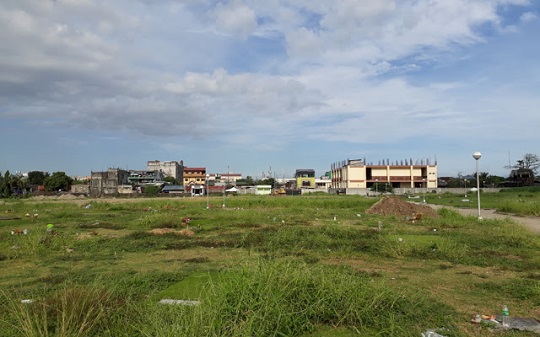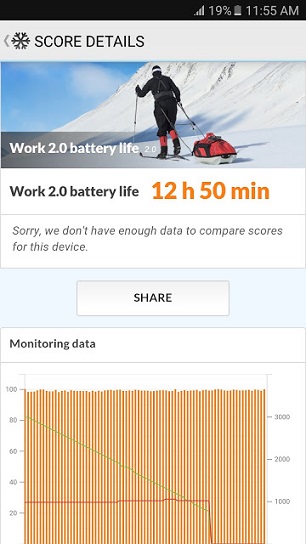 |
| Samsung Galaxy J7 Prime Review; Grade A |
INTRODUCTION:
The year 2016 was a huge challenge for the Samsung Mobile business unit, and we all know the main reason behind. Thankfully, there are tons of handset offerings from Korean manufacturing mogul, devices that made the company stays afloat, one of them is the Samsung Galaxy J7 Prime.
The Samsung Galaxy J7 Prime was unveiled in the Philippines last October 10, it boasts good specs with just about the right price tag, and aims to conquer, or at least get a big chunk of the local lower mid-range market that is mainly dominated by the competitors from China. But, does it have enough aces on its sleeve to win the game?
PHYSICAL:
The Samsung series is essentially divided into four groups, the Galaxy Note, Galaxy S, Galaxy A and the Galaxy J. The latter covers mainly the entry to lower mid-range smartphone bracket. But, unlike previous offerings, the Galaxy J7 Prime deviates from the plasticky body of most devices under the same line-up. Instead, it now offers a metallic unibody design with a build quality that looks really premium that people really think it is more expensive than its actual asking price.
However, despite of having a beautiful and radiant body, you can easily guess that it is made by Samsung even without looking on its logo, simply because it retains the same footprint of the Korean manufacturer.
 |
| Front |
Just like the previous J7 generations, it has 5.5-inch display, but for some reason, Samsung opted to use PLS TFT screen instead of the Super AMOLED found on its older siblings, thankfully, it got a better resolution at Full HD or 1920 by 1080 pixels. With a pixel density of about 401 PP1, it provides crisp and vibrant output with good viewing angles and just the right amount of brightness. However, the outside visibility and sunlight legibility tell us otherwise, and can be categorized as average, or below average in some extent, mainly because of the reflective glass panel and the absence of the ambient light sensor. Without the said component, there is no automatic brightness feature, an attribute that is mostly present even on budget smartphones. By the way I am not sure whether it has a scratch-resistant glass, since the Corning Gorilla protection is market dependent, so better install a protective film for your peace of mind.
See Also: Samsung Galaxy Tab S3 with Snapdragon 820 and 4GB RAM Appears on GFXBench
 |
| Display Info |
In terms of dimensions, it has the same length with the J7 2016 at 151.7mm, but narrower by 1mm (75mm versus 76mm) and around 0.2mm thicker (8mm x 7.8mm). Its weight is slightly lower at 167 grams compared to 170 grams of its predecessor. In comparison, it is sleeker and thinner by a few millimeters than the ASUS ZenFone 3 Max (151.4mm x 76.24mm x 8.3mm, 175 grams).
 |
| Back |
Below the display is the home button that doubles as the fingerprint sensor placed in between the two capacitive keys, while above the screen are the secondary camera, earpiece grill, proximity sensor, notification LED and the company logo. Looking at the back you will find the 13MP main camera along with its lone LED flash, and another company logo.
 |
| Sides |
The top is clean as there nothing on it, while the bottom is a bit busy holding the 3.5mm audio jack, the micro USB port and the primary microphone. The left side hosts the volume rocker, the dedicated micro SD tray and the tray for the two Nano SIM cards, while the right side has the power button and a small slot for the loudspeaker.
SOFTWARE:
 |
| Software |
The handset runs on Android 6.0 Marshmallow with TouchWiz UI on top, a proprietary interface known to Samsung phones for quite some time now. Of course, not all likes it, many still prefer the simple material design of stock Google UI, but we cannot deny the fact that lots of people love it. And, as I always say, a trade interface like this gives a brand its own identity, distinction among competitors. But then again, you can always download a skin or a theme of your own liking.
PERFORMANCE:
 |
| CPU Z Info |
The Galaxy J7 Prime is powered by Samsung's own chipset, an Exynos 7870 that has 8 Cortex-A53 CPU cores clocked at 1.6GHz each combined with dual core Mali-T830 GPU. There is a 3GB of RAM to handle multiple tasks and a 32GB of ROM (24.6GB available to user) to store apps and files. Comparing it to its main rivals, the OPPO F1s and Vivo V5 use MediaTek MT6750 that has a lower CPU frequency, but has a better Mali-T860MP2 GPU. The ASUS ZenFone 3 Laser and the ZenFone 3 Max have Qualcomm Snapdragon 430, still lower CPU frequency of 1.4GHz, but uses a different GPU, which is Adreno 505. Meanwhile, the Huawei GR5 2017 comes with HiSilicon Kirin 655, it has the same GPU, but offers better CPU clock speed.
Below are the scores it got from our favorite benchmark applications:
Antutu - 36,351
Quadrant - 23,065
NenaMark2 - 46.3fps
Geekbench - 642 (single core)
Geekbench - 2,682 (multi core)
Geekbench - 1,804 (renderscript)
PC Mark - 3,559
Vellamo Browser - 2,754
Vellamo Metal - 1,035
Vellamo Multicore - 1,409

 |
| Benchmark Results |
Also Read: Samsung Galaxy Tab S3 Rumored to Come with Exynos 7420 Processor and 4GB RAM
In real life scenario, it performs daily tasks consistently, from navigating the interface, making calls and texts, web browsing and even some light gaming. However, games like Asphalt 8, Modern Combat 5, and NBA 2K17 suffer from some dropped frames or a little stutter once in a while, in other words, it lets you play heavy games, but not completely 100% smooth. Moreover, resources seem to be easily depleted when there are several apps running at the same time, so aside from lowering the graphic settings, we also recommend closing background apps for a better game play.
CAMERA:
 |
| Camera Interface |
The camera interface is very straightforward that users can easily operate it with very little or no learning curve at all. It offers different shooting modes, such as auto, beauty face, sports, night, sound & shot, panorama, continuous shot, HDR, and Pro. Don't get too excited with the Pro Mode, as it only offers the ability to adjust ISO, Exposure and White Balance.
 |
| Outdoor, Midday |
 |
| Broad Daylight |
 |
| Indoor, Parking Area |
 |
| Night, Close Shot |
 |
| Night, Outdoor |
 |
| Night |
The main gunner can shoot at 13MP still and 1080p at 30fps video. In good lightning environment, the output images are nice to look at having crisp, vibrant and well-reproduced colors. Low-light photography is possible too, thanks to its wide f/1.9 aperture, the pictures captured at night or less ideal conditions are still very usable with tolerable noise. On the other hand, the 8MP front snapper is more than good enough for taking casual groupies and selfies intended for social media posting.
CONNECTIVITY:
The connectivity features include dual SIM with fast mobile data via 4G/LTE, the usual Wi-Fi and Bluetooth, and the OTG-capable micro USB 2.0 port. There was no issue of signal reception and pairing encountered during the testing period.
BATTERY:
 |
| PC Mark Work Battery Life Score |
It has 3300mAh battery, which is non-removable due to the unibody design nature. It usually gets me through a complete day with a few more extra left under normal to heavy usage that includes consuming data, a couple of hours or more on Facebook and other social media platforms, 30 minutes minimum of web browsing, few calls and several exchanges of text messages. There is also a battery saving feature called S-Power, it lets users extend up-time by limiting the activities of less important applications. It managed to snag 12 hours and 50 minutes in PC Mark Battery Test, though not the best we've got, it is already considered as impressive.
CONCLUSION:
The Galaxy J7 Prime offers a well-rounded performance to consumers that want to cover the basics plus some extras, from being a fluid daily driver, having a good pair of cameras, and above average battery life. Add the elegant design, premium body, and Samsung name on it, and you got yourself a nice smartphone to carry around. However, it also misses an important aspect, and that is to pay attention to its display. We do not know why an ambient light sensor, a typically less than a dollar component, is omitted in the schematics, and having a reflective screen does not make it any better.
Samsung Galaxy J7 Prime Specifications:
- GSM: 850/900/1800/1900MHz
- 3G: 850/900/1900/2100MHz
- FDD LTE: B1/3/5/7/8/28
- TDD LTE: B38/39/40/41
- Dual Nano SIM, dual standby
- 5.5-inch PLS TFT Full HD (1920x1080) touchscreen display
- Dimensions: 151.7mm x 75mm x 8mm
- Weight: 167 grams
- Android 6.0 Marshmallow with TouchWiz UI
- 1.6GHz 64-bit octa core Cortex-A53 CPU, Mali-T830 GPU, Exynos 7870 chipset
- 3GB of RAM
- 32GB internal storage, expandable via micro SD card up to 256GB, dedicated slot
- 13MP f/1.9 auto focus main camera with LED flash, FHD video recording at 30fps
- 8MP f/1.9 secondary camera
- Multimedia player
- 3.5mm audio jack
- GPS with A-GPS, GLONASS, BDS
- WiFi 802.11 a/b/g/n
- Micro USB 2.0 with OTG function
- Bluetooth v4.1
- Sensors: fingerprint, accelerometer, proximity
- Battery: 3300mAh lithium-ion, non-removable
- Color: white gold
- Price:Php13,990
